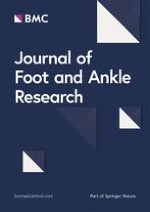Background
Materials and methods
Results
Activity | Joint | Variable Name | Control | VSS | %difference |
|---|---|---|---|---|---|
Walking | Knee | Max adduction moment (%BWxHt) | 0.37 | 0.35 | -5.994 |
Walking | Max anterior force at push off (%BW) | 19.73 | 20.97 | 6.302 | |
Running | Knee | Max adduction moment (%BWxHt) | 1.04 | 0.88 | -14.716 |
Running | Max posterior force (%BW) | -24.50 | -28.93 | 18.072 | |
Running | Max anterior force (%BW) | 29.02 | 30.78 | 6.078 | |
Stop Jumping | Knee | Max adduction moment (%BWxHt) | 0.83 | 0.67 | -18.661 |
Stop Jumping | Max posterior force (%BW) | -67.67 | -73.33 | 8.373 |
